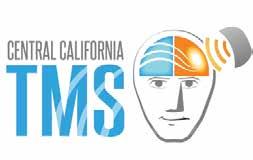
10 minute read
COVID AND THE ELDERLY
© Can Stock Photo / Zinkevych
Advertisement
FARAH KARIPINENI, MD
One of the very first things we learned about COVID-19 Lynch has already seen one suicide in his elderly patient was how crippling the virus is for our elderly population. population since the pandemic, and recalls two other Nursing homes across the world were one of the first and patients who are so depressed isolating from family that most vulnerable places in the pandemic’s devastating they want to die. path, and the medical community quickly rallied to try Dr Jyothi Patri, a family medicine physician at UCSF to understand and mitigate its havoc. Myriad articles Fresno, has also struggled with helping her elderly patients researching risk factors for predicting pathogenesis, survive isolation. On the one hand, she has seen firsthand cytokine storms, the contribution of “inflame-aging” and the effects of holiday family gatherings on COVID respiratory rehabilitation in the elderly immediately surged infections—four of her older patients were infected by on Pubmed. family members in the week after Thanksgiving. While she
But as we enter the new year still battling the has discouraged family visits in her high risk older patients, pandemic, another insidious pandemic has also been she wants patients to know that primary care in person ravaging our fragile elderly community, one which we are visits are still very important. Many older patients struggle similarly ill-equipped to battle: isolation. As physicians, to do telehealth, and telephone visits are insufficient to many of us have likely experienced the downstream discuss multiple medical issues in chronically ill, comorbid effects of this struggle in the patients. “We are seeing more form of our older patients exacerbations of chronic missing important follow up Extra patience from office staff diseases,” Dr. Patri says. appointments, labs, or imaging studies; displaying anxiety or may be required for navigating a Because they are afraid to go out, they refuse lab work. depression at visits; presenting telehealth visit with the elderly. “They are afraid to come to with more severe forms of the office. But a lot of physical non-COVID disease; and exam is done just by looking unable to do telehealth appointments. These issues are a at people.” She also notices that the patient-physician small manifestation of a much larger struggle that has been relationship has suffered during the pandemic, which may almost unbearable for the elderly in the past several months portend COVID vaccination refusal in the future: “Our of the pandemic, many of which stem from isolation. relationship with patients is suffering due to minimal
For Dr. Michael Lynch, an internal medicine contact. Elderly patients are leaning more on family than specialist in Fresno, this sobering trend has hit close to evidence-based information.” Dr. Patri urges physicians home. As the pandemic hit the valley, the local medical to encourage their healthy elderly patients to maintain in community rushed to set up resources to care for the person PCP visits, get the COVID vaccine when possible, elderly’s health care, but not their emotional needs. and avoid high risk family interactions. “Facilities like nursing homes need to be able to provide Indeed, while social isolation appears to be our best emotional support”, he states. One of the most important hope for preventing the spread of the pandemic among our ways of doing this is helping patients connect with their most vulnerable, it has also been linked to other diseases. families during isolation. “As people get older, their social Social exclusion has been associated with higher rates of contacts are more important. That’s all they exist for. When vascular disease, cognitive impairment, emotional distress, that is cut off, their purpose for existence goes away.” Dr. reduced physical activity, and even premature mortality. As


Plagg et al write in a recent study on prolonged social isolation during COVID-19, “The sad climax of isolation is the lonely dying and the impossibility of an accompanied, palliative situation — a human as well as medical-ethical debacle.”
Fortunately, there are many ways that physicians can help. Telehealth and telephone calls (for those who cannot do telehealth) can keep physicians in touch with their elderly patients, and may serve as virtual check-ins that are important not only for their physical conditions but for their mental health, as well. Extra patience from office staff may be required for navigating a telehealth visit with the elderly. When a telehealth visit is not possible due to technological barriers, offering a telephone call instead of postponing a visit entirely until safer times may also help patients feel less isolated. More frequent contact may also be needed; Dr. Patri has begun to offer 6-week telehealth follow-ups instead of the regular 3-month follow-ups for some of her elderly patients. During in-person office visits where no family is allowed, offering to put family members on speakerphone can be another resource. Ensuring a safe environment in the office by avoiding waiting room crowding, encouraging patients to make appointments for lab draws to reduce wait times can also make a big difference. And of course, screening staff plays an important role; some centers like Central Valley Indian Health are implementing random asymptomatic 2-4 week COVID testing for all staff in addition to temperature checks and daily questionnaires.
Another tremendous resource for the elderly, both in the face of the pandemic and otherwise, is the Valley Caregiver Resource Center. Michele Dibuduo, the Executive Director of the center, has worked tirelessly to increase their resources for the elderly and their caregivers during this critical time. Their services include support groups and a wealth of virtual classes on mental health, understanding the language of dementia, and the use of technology during isolation. They are willing and able to help connect patients to telehealth visits with contactless tech support. They even offer in-home respite visits to relieve caregivers, a program which is continuing during the pandemic. As some of their seniors don’t have internet or computers, they are purchasing iPads for families who do not have them. Most of their services are free, and a referral is as simple as giving the center’s contact information to patients or caregivers. More information on their services is available at valleycrc.org.
Another valley institution for comprehensive elderly care worth noting is the Program of All-Inclusive Care for the Elderly (PACE) for Fresno residents age 55 and over who need considerable assistance with daily living. Most patients need insurance to participate, but private pay patients may also qualify. A physician referral is needed, and a series of assessments affirms the need for services. Nicole Butler, Director of Operations at PACE, has noted worsening social isolation in their community as well: “It is the #1 issue when we talk to seniors, they are grossly alone, and saddened by that.” To combat this, all PACE participants receive a device called a Grand Pad when they become members. All the costs are covered by PACE, and home internet is not required. The user-friendly devices allow the elderly to participate in daily activities like bingo, history trivia, and chair yoga. They can also use them to call their PACE care providers. Find more information at fresnopace.org.
In the months ahead, COVID challenges abound. Keeping our older patients informed, connected and cared for will demand creative and dedicated solutions, and our role as physicians is crucial. Referring patients and caregivers to the resources in this article; urging patients to get the COVID vaccine; advocating for social distancing when necessary and safe family visits when possible; utilizing frequent telehealth and telephone visits to stay connected; and ensuring a safe office visit are just some of the ways we can help our vulnerable elderly survive isolation during the pandemic.
© Can Stock Photo / imtmphoto

New Life for Measure P
Finally—a bit of good news to finish off a horrendous year. Measure P, the city parks initiative that was backed by many physicians including our medical society, appears to be getting a second life. Although 52% of Fresnans voted for it in 2018, it didn’t make the 2/3 majority required by Prop 13 for any tax measures. But California’s Fifth District Court of Appeal decided that a 2/3 majority was not needed for this measure, and therefore the proposition passed. Fortunately, the city of Fresno said it won’t fight the ruling (the Howard Jarvis Taxpayers Assn. may appeal it to the state supreme court).
This is good news for Fresno, and good news for the health of our citizens, particularly our youth. Our young people have told us there is a dearth of places for them to get fresh air and exercise. And if this pandemic has taught us anything, we’ve learned that when you’re cooped up, outdoor exercise is just what the doctor ordered to maintain a healthy body and mind. But without safe, well-maintained parks, that type of exercise is difficult to obtain, especially for residents in the south part of town, whose neighborhoods have suffered from neglect for many years.
The Trust for Public Land annually ranks the nation’s top 100 cities for park access; Fresno recently ranked an embarrassing 94th out of 100 cities for park space. Now there is a chance we Fresnans can start bragging about our plentiful and safe green space, both north and south of Shaw Avenue.
Advanced Treatment for Major Depressive Disorder
Very often patients su ering from depression obtain no relief from multiple medications. In many cases drug therapy can cause signi cant side e ects resulting in non-compliance.

Safe and E ective Technology No anesthesia required No memory loss No down time from normal activities Accurate Neuronavigation System


559-433-1TMS
www.depressionfresno.com

BY JAMIE M. BOSSSUAT, ESQ
California employment laws are always changing, but employers in 2021 will face some significant changes and challenges ranging from COVID-19 safety and notification requirements to expansion of the California Family Rights Act. This article addresses a few key changes that employers should prepare for.
COVID-19 REQUIREMENTS
Cal/OSHA and OSHA have begun citing employers for COVID-19 safety violations. They have issued a total of more than $2.5 million in penalties through the end of October. To prevent citations and penalties, employers should have a written Injury and Illness Prevention Plan in place and should have a specific COVID-19 safety plan in place that employees have been trained on and that complies with both state and local guidelines.
Also, California law now has very strict notification requirements for COVID-19 exposure in the workplace. Employers must provide written notice to all employees who may have been exposed within one business day. This notice must also include notice of COVID-19 related benefits and the company’s anti-discrimination, antiharassment and anti-retaliation policies and the company’s disinfection protocols and safety plan.
Due to the short-timeframe for providing notice it is recommended that employers consult counsel and have a plan in place to respond to a COVID-19 exposure and have draft notices ready to be distributed quickly.
SEXUAL HARASSMENT TRAINING
All employees must have completed a compliant sexual harassment training by January 1, 2021. Supervisory employees must receive 2 hours of training and nonsupervisory employees must receive 1 hour of training. New hires must receive training within 6 months of their start date.
CALIFORNIA FAMILY RIGHTS ACT EXPANSION
California has significantly expanded the California Family Rights Act, which provides employees the opportunity to take up to 12 weeks of job-protected leave for their own serious health condition, the serious health condition of a family member or a birth or foster or adoption placement. The law, which previously only applied to employers with 50 or more employees now applies to all employers with more than 5 employees. The definition of “family member” has also been expanded.
All employers must update their employee handbooks to reflect this change and should familiarize themselves with the requirements of CFRA so they are prepared to implement the new law at the beginning of January.
MINIMUM WAGE INCREASE
Also, employers should keep in mind that the minimum wage increases each year in California. For 2021 the minimum wage will be $13 per hour for employers with 25 employees or less and $14 per hour for employers with 26 employees or more. This also increases the salary threshold for exempt employees who fall under the professional, administrative or executive exemptions. The salary minimum will be $54,080 for employers with 25 employees or less and $58,240 for employers with 26 employees or more.

